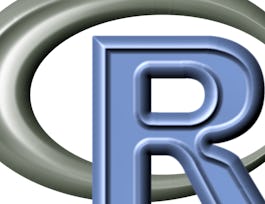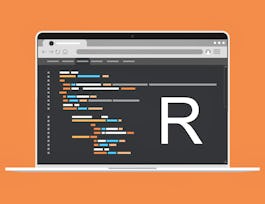Getting data into your statistical analysis system can be one of the most challenging parts of any data science project. Data must be imported and harmonized into a coherent format before any insights can be obtained. You will learn how to get data into R from commonly used formats and harmonizing different kinds of datasets from different sources. If you work in an organization where different departments collect data using different systems and different storage formats, then this course will provide essential tools for bringing those datasets together and making sense of the wealth of information in your organization.



Importing Data in the Tidyverse
This course is part of Tidyverse Skills for Data Science in R Specialization



Instructors: Carrie Wright, PhD
Sponsored by Abu Dhabi National Oil Company
1,910 already enrolled
(44 reviews)
Recommended experience
What you'll learn
Describe different data formats
Apply Tidyverse functions to import data into R from external formats
Obtain data from a web API
Skills you'll gain
- Databases
- Data Import/Export
- JSON
- Application Programming Interface (API)
- Spreadsheet Software
- Relational Databases
- R Programming
- Database Systems
- Data Transformation
- Data Processing
- Data Integration
- Extensible Languages and XML
- Extensible Markup Language (XML)
- Statistical Programming
- Tidyverse (R Package)
- Extract, Transform, Load
- Web Scraping
- Data Wrangling
- Data Engineering
- YAML
Details to know

Add to your LinkedIn profile
5 assignments
See how employees at top companies are mastering in-demand skills

Build your subject-matter expertise
- Learn new concepts from industry experts
- Gain a foundational understanding of a subject or tool
- Develop job-relevant skills with hands-on projects
- Earn a shareable career certificate


Earn a career certificate
Add this credential to your LinkedIn profile, resume, or CV
Share it on social media and in your performance review

There are 6 modules in this course
A basic data type in the tidyverse is the tibble. Tibbles store tabular data and are a modern take on the standard R data frame. They have many user-friendly features that are an improvement over standard data frames when doing interactive data analysis. The remainder of this module covers tabular data in spreadsheet formats like Excel, CSV, TSV, and other delimited files.
What's included
15 readings1 assignment
Data can come in non-tabular formats, especially unstructured data or data that otherwise would not fit into a table. JSON and XML are common formats for storing arbitrarily structured data and this module covers the packages used to read in those data formats. In addition, relational databases are common for storing very large collections of tables where you do not need to read in the entire dataset at once. There are many relational database formats and we will cover the SQLite format, which is a compact and simple to use format.
What's included
10 readings1 assignment
Reading in data from various Internet sources can be a useful way to build analyses that need to be regularly updated. The rvest and httr packages are useful for connecting to web sites, web APIs and other online sources of data.
What's included
11 readings1 assignment
Working with others in a data science project often involves reading output or data produced using other statistical analysis packages or other software. This module covers packages for reading in these foreign formats, as well as images and data from Google Drive.
What's included
3 readings1 assignment
Now we will demonstrate how to import data using our case study examples. When working through the steps of the case studies, you can use either RStudio on your own computer or Coursera lab spaces provided for each case study.
What's included
11 readings2 ungraded labs
This project will give you the opportunity to read in data from multiple sources and conduct some simple operations on those data.
What's included
2 readings1 assignment
Instructors



Offered by
Why people choose Coursera for their career




Learner reviews
44 reviews
- 5 stars
75.55%
- 4 stars
20%
- 3 stars
4.44%
- 2 stars
0%
- 1 star
0%
Showing 3 of 44
Reviewed on Nov 22, 2022
Excellent. While there were no lectures, and it is possible to simply read the authors' book, having the quizzes makes the difference between just reading and actually learning. Thanks!
Reviewed on Mar 27, 2021
Great for beginners. Clearly explained, and easy to follow.
Reviewed on Jan 28, 2021
Excellent tutorial for importing data into the tidyverse environment
Recommended if you're interested in Data Science

Johns Hopkins University

Johns Hopkins University

Open new doors with Coursera Plus
Unlimited access to 10,000+ world-class courses, hands-on projects, and job-ready certificate programs - all included in your subscription
Advance your career with an online degree
Earn a degree from world-class universities - 100% online
Join over 3,400 global companies that choose Coursera for Business
Upskill your employees to excel in the digital economy





